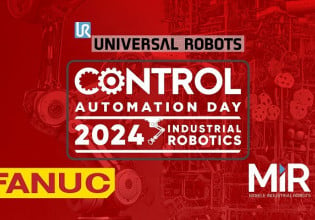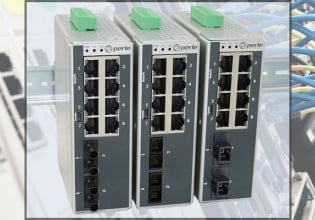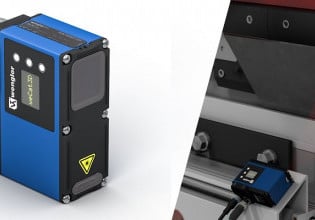Manufacturing Technologies For Increased Productivity and Reduced Costs
Amid global economic concerns, businesses are looking towards automation. Explore the emerging technologies helping make the future of manufacturing more cost-effective and productive.
In 2020, the manufacturing industry fell when faced with the coronavirus pandemic. Worker interaction and mobility were impeded, stalling manually operated processes. Moving from 2020 to the present, climate change and associated natural disasters, along with food security concerns and trade tensions spurred by the war in Ukraine, have all put the global economy at risk of recession.
With particular attention turned towards reducing manufacturing costs and increasing productivity, manufacturers have been turning to digitization, robotics, modular automation, 3D printing, and strengthening the security of their operations.

The use of IIoT-enabled sensors can optimize manufacturing processes. Image used courtesy of Siemens
Digitization and Digilization
In the context of manufacturing, factory digitization may involve the conversion of a unit of data (such as a measurement from a manual/mechanical reading) to an electronic format. Digitization can be followed by digitalization, where digital technologies and digitized data are used to gather and analyze data to generate insights.
Manufacturers are starting to use IIoT-enabled sensors on machinery/assets to track products as they move through production lines (whether they be conventional assembly or modular). According to The Wall Street Journal, Harley Davidson retrofitted their equipment with IIoT sensors and by doing so, were able to speed up bike production times from 3 weeks to 6 hours. Speeding up production like this saves time and enhances revenue streams.
Digitization brings in sensors and computers that connect with assets/machinery to collect data and generate valuable insights using predictive analytics. Plantweb Optics from Emerson is just one of a variety of artificial intelligence (AI) and machine learning (ML)-based software systems being employed to monitor and enhance facility operations. Using sensor technology, cloud storage, and analytical software in a condensed system can provide predictive maintenance. Faults or errors in machinery can be identified and rectified immediately. This can reduce unnecessary downtime, and costs incurred from on-call maintenance teams, and increase profits.
Manufacturers are also turning to computing at the “edge,” which means computing done closer to sensors. Not only can data be captured much faster, but manufacturers can process data on less expensive local devices as opposed to more costly cloud storage.
Robotics and Modular Automation
Digitization and increased digitalization of manufacturing systems are leading to enhanced connectivity between machines and control systems. Human-machine collaboration is becoming more common in efforts to solve the challenge of labor shortage and enhance task accuracy for improved operational performance.
Cobots and AMRs are becoming attractive investments for manufacturers, not only in terms of boosting productivity, but cost. In a case story from Universal Robots (UR), DCL Logistics (DCL) selected the Universal Robots UR10 cobot to improve its fulfillment system. By using the UR10 cobot, DCL was able to increase productivity by 500 %, and achieve 100 % order accuracy, and 50 % labor savings.
A case story from UR with DCL Logistics. Video used courtesy of UR
Automated guided vehicles are another key technology driving productivity and cost reductions for manufacturers. Audi AG’s modular approach to automotive manufacturing involves using AVGs to bring vehicle parts to modular workstations that break up what would have been a traditional long assembly line. This method not only boosts productivity by about 20 %, but it allows for production cost savings because of the flexibility afforded by a modular system in changing aspects of vehicle design.
3D Printing and Additive Manufacturing
The reduced cost of process downtime and manufacturing, along with technological advancements are just some of the key drivers behind the growth in the 3D printing market. According to Markets and Markets, the market is expected to grow to a value of $34.8 billion by 2026 from a valuation of 12.6 billion in 2021. Growth is expected at a compound annual growth rate (CAGR) of 22.5 %.

An image of a simulation of Wärtsilä's pump impeller. Image used courtesy of Oqton
One use case for 3D printing involved the development of a pump impeller using additive manufacturing. Finnish manufacturing company, Wärtsilä Corporation, teamed up with software company Oqton Inc., to leverage its metal-additive simulation software, Amphyon. Two other collaborative partners, metal-additive technology expert, SLM Solutions, and engineering design software company, nTopology, also joined the team. Together, the four companies were able to simulate the pre-deform designed models and metal-additive process. Oqton said that this enabled the generation of more accurate impeller designs with fewer design variants and reduced costs.
Manufacturing the Future
Amid global economic concerns, businesses are looking to manufacturing technologies like digitization, robotics, and additive manufacturing to reduce the cost and increase the efficiency of operations, transforming traditional manufacturing.






